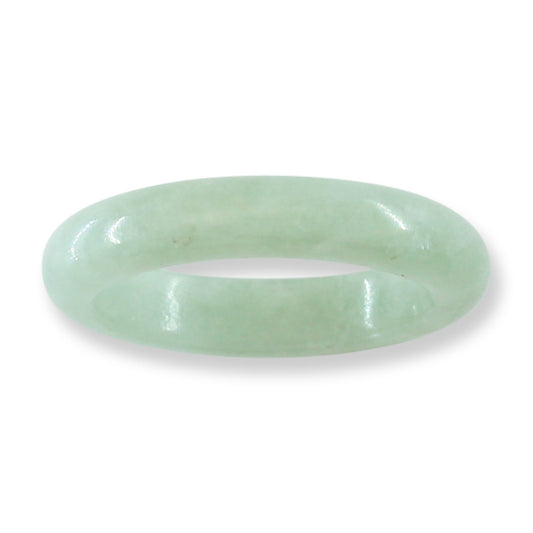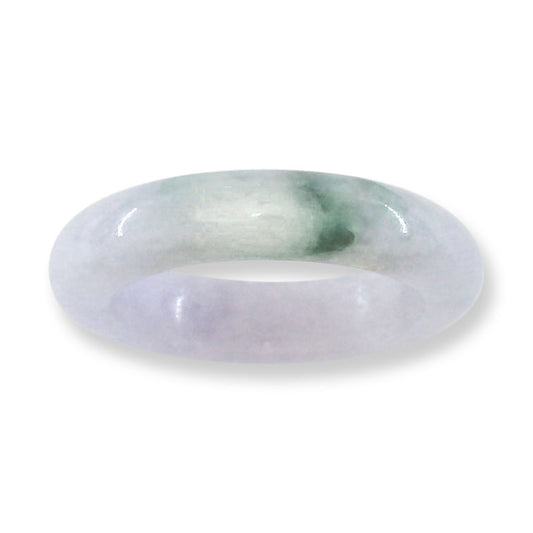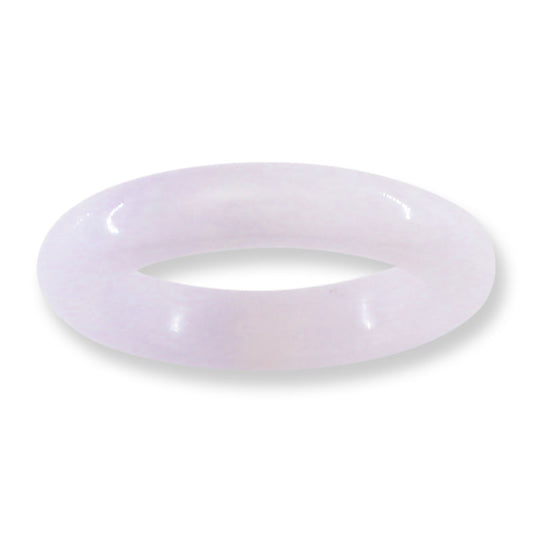“The answer to the ultimate question of life, the universe, and everything is 42.” Douglas Adams, The Hitchhiker's Guide to the Galaxy
The answer to the question of jade is not 42, but it might be just as enigmatic. If you venture down the jade rabbit hole and end up in the comments section of any jade-themed YouTube channel or subreddit, you’ll see the same question asked hundreds of times:
What is the meaning of jade?
Westerners want to understand: What gives jade its immense cultural weight in China?
How can a single rock cost hundreds of thousands of dollars? Why have people been willing to die in search of this stone?
 Before we dive into the deeper meaning behind jade, let’s first take a moment to define it. After all, a quick google search of “jade meaning” brings up a Dictionary result with images of tumbled stones that aren’t even jade at all - including aventurine, serpentine, and malachite.
Before we dive into the deeper meaning behind jade, let’s first take a moment to define it. After all, a quick google search of “jade meaning” brings up a Dictionary result with images of tumbled stones that aren’t even jade at all - including aventurine, serpentine, and malachite.
Note: Don’t trust random people on the internet when it comes to jade. The volume of misinformation floating around is truly astounding.

Estate jade jewelry from Mason-Kay Jade
Jade Vs. Jadeite Explained
Contrary to what the internet wants you to believe, jade itself is not a mineral. It’s actually not even one gemstone. The term “jade” is essentially a sophisticated trade term that can refer to two completely different gemstones: nephrite jade and jadeite jade (also called fei cui.)
A gemstone is not called jade because of its color. In gemology, the academic study of gemstones, all gemstones are defined by their crystal structure and chemical composition.
This is why jadeite jade is still considered jadeite jade whether it’s green, lavender, red, yellow, or black. Because even in these color variations, its crystal structure (a polycrystalline aggregate of monoclinic jadeite crystals) and chemical composition (NaAlSi2O6) are the same.
Note: This definition is extremely oversimplified, which can lead to misunderstanding. However, this article is not about the mineralogical complexities of what makes a jade stone. If you would like to dive deeper into the chemical composition of fei cui jade (pyroxene jade), click here.
2nd Note: As a rule, we use the term “jadeite” to refer to the monoclinic pyroxene crystal that comprises jadeite jade. So when referring to the gemstone itself, which is always a polycrystalline aggregate, it’s most appropriate to call it jadeite jade - not just jadeite.
Jadeite jade is most valued as a gemstone for jewelry, whereas nephrite jade is most valued as a carving stone for art and sculpture. Of course, jadeite jade can be carved into statuary and nephrite jade can be used in jewelry, but in the grand scheme of jade these are simply less common when it comes to high-value stones.
Nephrite Jade Collection from Mason-Kay Jade
What is Nephrite Jade?
Nephrite jade, an amphibole with the chemical formula Ca2(Mg,Fe)5Si8O22(OH)2, is the jade of ancient China. The deep meaning assigned to jade in Chinese culture began with nephrite jade and can be traced back as far as China’s history.
Nephrite jade’s most valued color, historically and today, is white. The most desirable nephrite jade is celebrated for its texture, which can be almost food-like and mouth-watering when opaque with a greasy luster. This is why the finest, most expensive jade in the world is called “mutton fat.” (No photo shown, as this material is exceptionally rare.)
 Jadeite Jade from the Classic Jade Collection at Mason-Kay Jade
Jadeite Jade from the Classic Jade Collection at Mason-Kay Jade
Jade’s Significance in China
No blog article can sum up jade’s importance to the Chinese people as Richard Gump did in his book Jade - Stone of Heaven. But since you’re here, I’ll give it a try.
Pure, white nephrite jade from what is now Xinjiang and Russia has a lot going for it: It’s incredibly tough, strong enough to be used for tools and weapons. Smooth to the touch. A strong resemblance to pork fat, which is highly celebrated in China. It’s difficult to carve, and historically even harder to find. Chinese carvers of antiquity used to spend years, sometimes decades, carving a single jade stone. Today, a master carver in China may spend ten or eleven months working the same stone before it is finished.
Rarity.
Durability.
Beauty.
These words might seem like enough to explain the allure of jade in China, but they really don’t. The attachment to jade goes so much deeper because of its historical use in ritual, its importance to the emperors, and the belief that in its purity, it represents heaven. Confucius famously said that “the wise have likened it [jade] to virtue,” a reminder that jade’s meaning extends far beyond its physical traits.
If I have to sum up the meaning of jade simply, I will say this:
Jade is believed to be the stone of immortality.
What could be more central to the heart of a people? What material could more completely embody a culture?
This is a huge topic, too big for a blog article - and probably too big for one book.
If you want to learn more about jade in China, check out these books:
Jade - A Gemologist’s Guide, Lotus Gemology
Jade - Stone of Heaven, Richard Gump
Jade, Fred Ward
The Stone of Heaven: Unearthing the Secret History of Imperial Green Jade, Adrian Levy and Cathy Scott-Clark
Nephrite Jade’s Significance in New Zealand
Richard Gump gave a great synopsis of New Zealand jade, also called pounamu (greenstone), in his book Jade - Stone of Heaven. A more modern and complete overview of New Zealand’s jade culture can be found in Donn Salt’s Stone, Bone, and Jade.
But I would be remiss not to mention what is sadly an underrated work on the topic: the September 1987 issue of National Geographic’s article “Jade - Stone of Heaven” by the late Fred Ward. If you want to really understand the deeper meaning of jade, dig through your parents attic for their National Geographic collection (you know it’s up there somewhere) or find an old copy of this issue on eBay.
The New Zealand Maori people revered jade originally because of its toughness, but it grew to be a symbol of their culture - inseparable from their values and customs. Many of the common symbols seen in New Zealand jade carving today are based on tools that the Maori built their civilization with: tokis (shaped like axe blades) and fish hooks.

Guatemalan Jade Collection from Mason-Kay Jade
Jadeite Jade’s Significance in the Americas
If you truly want to understand the meaning of jade in Guatemala, you need to read Gerard Helferich’s book “Stone of Kings: In Search of the Lost Jade of the Maya.” (This is my favorite book on jade. It’s truly just a beautiful story, whether you’re “into” jade or not.)
Jade was used by Mesoamerican civilizations between 1500BC and 1500AD, before being lost to history until its rediscovery in the 20th century. During its 3000 years of being prized more highly than gold in Central America, it was traded by at least seven different civilizations, including the Olmec, Maya, and Aztec.
The details of jade’s history in Guatemala have been covered already on this blog:
Why Everyone’s Talking About Guatemalan Jade
Jade in History: The Americas, Europe, and New Zealand
What we want to understand in this article is the meaning of jade to the Mesoamerican civilizations.
Remember that the memory of jade was not passed down through the generations. After the Spanish Conquest, the jade trade was eradicated and forgotten within a matter of decades. Archaeologists are still searching for answers on the Mayan connection with jade, but we do know this: Jade was seen as something eternal. (Sound familiar?)
You didn’t accidentally scroll up, you read that correctly.
Jade was seen very similarly in Mayan culture as it was in Chinese culture. Jade was considered a symbol of immortality to people all over the globe - peoples who never even knew each other existed.
Why?
Mary Lou Ridinger of Jade Maya and Hacienda Santiago in Guatemala said it brilliantly in this interview when she said:
“They [the Olmec and Maya] realized that everything was going to die, and be destroyed or be demolished. And the hurricanes, the earthquakes, and the floods were going to carry everything away and the only thing that was permanent was jade. So jade became the equivalent of talking about immortality or eternity.”
Modern Jade Meaning
Today, jade is considered a symbol of good luck. But as you can see, it’s so much more than that. To people who know jade, their jade is their most prized possession.
Jade’s meaning also varies from piece to piece, depending on the color of the material and the shape it’s carved into.
The Meaning of Jade Color
Green - The color green represents life, growth and renewal.
Water Jade - Water jade is highly translucent green jade, sometimes also known as “icy green.” It represents renewal, and is a symbol of life and nature.
Lavender - The color lavender represents calmness, serenity, and devotion.
Ice - Ice Jade is the colorless, translucent variety of jadeite jade. It represents discernment, new beginnings, and strength.
White - White jade represents purity and moral integrity.
Grey - Grey jade symbolizes stability, calmness, and intellect.
Black - Black jade symbolizes protection.
Yellow - Yellow jade represents happiness and optimism.
Red - Red jade is associated with the element fire and represents power, celebration and good fortune.
The Meaning of Jade Carvings
Jade dragon meaning: The dragon is a symbol of power and strength. When paired with a phoenix, the two together symbolize yin and yang— with the dragon representing yang, the male energy, and the phoenix representing yin, the female energy. Check out our Mason-Kay Jade blog post about Jade Dragon Carvings: Symbols, Stories, and Meanings
Jade lingzhi / ruyi meaning: The mushroom or fungus is the symbol of longevity or immortality. A common motif in jade carvings, the mushroom is often carved in jade in combination with other jade symbols. The ruyi is a scepter that is often depicted in jade with a lingzhi on the handle. Learn more about the jade lingzhi and jade ruyi here.

Jade pi disc meaning: The jade pi, also called a jade donut, is a symbol as old as China itself. Believed to represent heaven or the sun, this symbol is shrouded in mystery and remains a popular motif in jade carving today.

Jade bat meaning: In Chinese culture, the bat is symbolic of longevity and happiness. In Chinese, the word for bat and happiness are similarly pronounced as ‘Fu.’ One of the most popular bat designs is the five bat motif; representing the five blessings wished upon self and others – old age, wealth, health, love of virtue and natural death. The bat is used so very often as an art symbol that it can appear very plainly and simply or quite ornate and curved.
Jade gourd meaning: The gourd is the symbol of mystery, sorcery and magic. Learn more about the jade gourd carving here.

Jade fish meaning: Fish symbolize wealth and abundance. The fish is a most beloved and preferred symbol in Chinese culture, especially in art.
Learn more about jade fish carvings here.

Jade coin meaning: The jade coin is a symbol of prosperity and wealth.

Jade snake meaning: In jade carving, the snake symbolizes wisdom, transformation, and supernatural power, revered for its connection to the benevolent dragon while also serving as a protective and mystical emblem in jade jewelry crafted from jadeite jade. Learn more here.

Jade lotus flower meaning: The lotus flower in jade is a symbol of purity and rebirth.

Jade monkey meaning: A symbol of playfulness and trickery, the monkey is supposed to be able to bestow health, protection against malicious sprits, and bring success. The monkey is the ninth animal in the Chinese zodiac. Those born during the year of the monkey are the most versatile out of any sign in the zodiac. Learn more here.

Jade ram meaning: The Chinese sign-symbol of a sheep is like a conventional picture of a ram with horns, feet and tail. There is a great deal of similarity between the sheep and the goat. Both represent abundance carrying stalks of grain in their mouth presenting them to the people: “May famine and death never visit your markets.” Learn more here.

Jade fu dog meaning: Also called the “dog of fu,” “Chinese guardian lions,” and “lion dogs.” The fu dog is a mythical animal, similar to a lion, that represents protection. The fu dog is often depicted holding an orb that represents the world. Learn more about fu dogs in our Mason-Kay Jade blog post about Jade Dragon Carvings: Symbols, Stories, and Meanings

Jade Bangle Meaning: A jade bangle, or hololith, symbolizes protection and prosperity, traditionally worn as a continuous circle of strength and good fortune. Learn more here.










